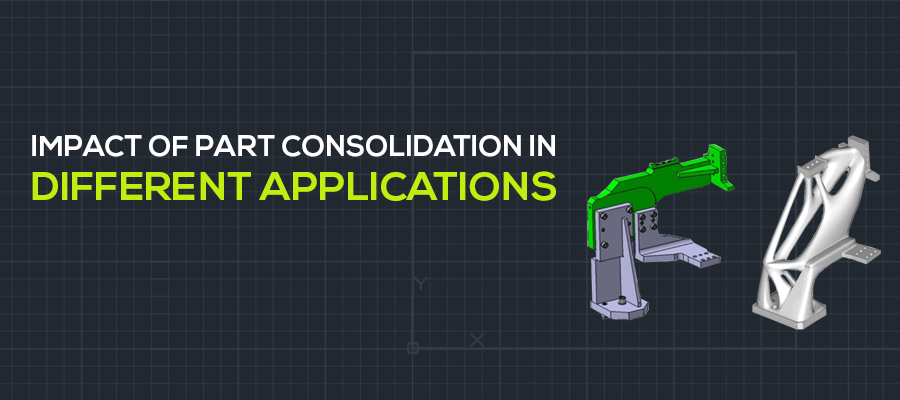Additive Manufacturing technology is capable of endless possibilities that can benefits different industries through part consolidation. This tool-less process can turn complex geometrical shapes consisting of multiple parts into a monolith piece. From automotive to aerospace and defense, the manufacturers are seeing increased performance and durability by converting several parts into one with metal 3D printing. Let’s take a closer look at how part consolidation has impacted three specific applications:
• Turboprop Engines: DFAM stands for Design For Additive Manufacturing, which is a term usually referred for creating parts with additive manufacturing in mind. As of now, the biggest success story using DFAM to consolidate parts comes from GE Aviation with one of its new turboprop engines. The Advanced Turboprop (ATP) uses additive manufacturing technology to reduce the number of components, from 845 down to just 11. This huge consolidation not only brings the overall cost down but also reduces fuel consumption by 20%, increases power output by 10%, and reduces the overall engine weight. After the parts are consolidated in the engine, there are fewer parts that need to be designed, certified, inspected and manufactured.
• Pump Impellers: Traditionally-manufactured pump impellers often had separate parts that were welded together and use to have gaps between its components. But now with part consolidation, these can be 3D printed as one single piece with no gaps, thus improving their overall performance. It’s also important to note that because the welded joints have been eliminated, the numbers of potential failure points have been reduced and corrosion at the welds will no longer occur.
• Air Ducting: Air ducts are another great example of parts consolidation. The part geometry and air flow can be optimized using complex geometries built through AM. A case example of this is a cooling duct in the HP 500/300 printer series that utilizes HP MJF (Multi Jet Fusion). By consolidating eight parts into one, HP was able to simplify its supply chain and lower the component cost by 30%.
Conclusion
The applications of additive manufacturing continue to expand across different fields enhancing the creativity and productivity of design engineers. Manufacturers strive to achieve the reduction in cost, supply chain risk, and improved performance which is now very much possible with part consolidation capabilities provided by metal 3D printing technology.




